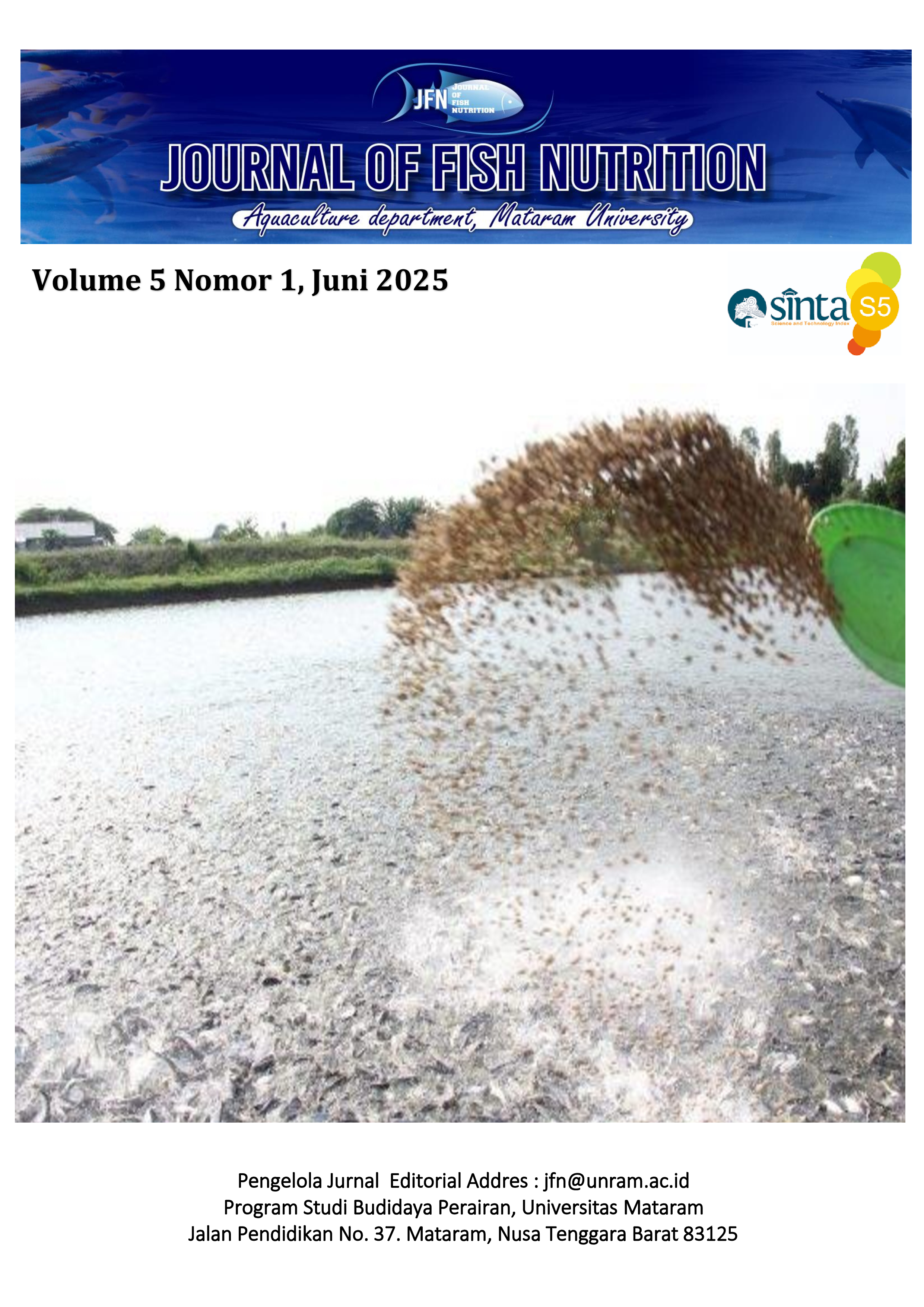Biomass Production and Agar Yield of Gracilaria sp. Under Varying TAN Concentrations
DOI:
https://doi.org/10.29303/jfn.v5i1.7551Keywords:
Gracilaria sp, Growth, Fertilizer, Total Ammonia Nitrogen (TAN)Abstract
Gracilaria sp. is a type of agar-producing seaweed that is widely used in the food, cosmetics, and pharmaceutical industries. Additionally, Gracilaria sp. plays a crucial role in absorbing nitrogen, phosphorus, and carbon, thereby helping to maintain the balance of aquatic ecosystems. This research aimed to analyze the biomass and agar yield content of the seaweed Gracilaria sp. by fertilizing with different TAN concentrations. This research was carried out from August to November at the Aquaculture Environmental Laboratory, Mataram University. The method used was a Completely Randomized Design (CRD) with five Total Ammonia Nitrogen (TAN) concentration treatments: P0 (control), P1 (0.01 mg/L), P2 (0.025 mg/L), P3 (0.050 mg/L), and P4 (0.975 mg/L), each with three replications. Parameters observed included absolute weight, specific growth rate (LPS), thallus length, survival, agar yield, and water quality. The results showed that the addition of different TAN concentrations did not have a significant effect on seaweed growth based on the ANOVA test at the 0.05 level. The results of the 2nd-order polynomial regression analysis showed that there was a strong relationship with agar yield, a moderate relationship with growth, and a weak relationship with thallus length with TAN concentration. This research concluded that the TAN concentration used was not able to provide nutrients for growth, but only to maintain life.Downloads
Published
2025-06-30
How to Cite
Ardi Ikhsan, Diniarti, N., & Muhammad Sumsanto. (2025). Biomass Production and Agar Yield of Gracilaria sp. Under Varying TAN Concentrations. Journal of Fish Nutrition, 5(1), 79–89. https://doi.org/10.29303/jfn.v5i1.7551
Issue
Section
Articles







